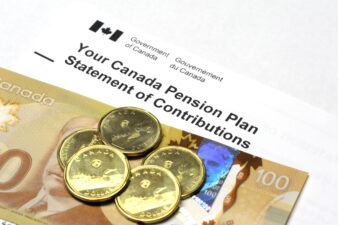Dividends are a great source to supplement your income post-retirement. However, retirees should take caution before investing in stocks, as dividend payouts are dependent upon the financial performance of a company and guaranteed. Thus, retirees should focus only on companies with well-established businesses, resilient cash flows to cover their payouts, and a growing earnings base.
Thankfully, the Canadian stock exchange has several top stocks with a solid history of consistently paying and increasing their dividends in all market conditions. Further, their resilient cash flows and growing earnings base implies that retirees can consider these stocks to enhance their income.
Against this background, I’ll focus on two Canadian dividend stocks in this article that have uninterruptedly paid and raised their dividends for over two decades. This means these Canadian corporations have enhanced their shareholders’ returns, even amid the COVID-19 pandemic and the recession of 2008. Moreover, these are large-cap companies with a growing earnings base and a well-protected payout ratio.
A resilient stock from the energy sector
It’s worth mentioning that the performance of energy companies is closely related to the health of the economy. This means that economic weakness could hurt the financials and dividend payouts of the companies operating in this space. However, Enbridge (TSX:ENB), with its solid business model, diversified income base, and regulated utility-like projects, has consistently paid and raised its dividend, regardless of the market conditions.
It has paid a regular dividend for over 68 years. Impressively, its dividend grew at a compound annual growth rate, or CAGR, of 10% (the highest among its peers) in the past 28 years.
Enbridge transports oil and gas. Further, its investments in conventional and renewable assets position it well to capitalize on future energy demand. Notably, its assets generate low-risk cash flows across commodity and economic cycles that help it to cover dividend payments. Moreover, long-term contacts, power-purchase agreements, and regulated cost-of-service tolling framework drive its distributable cash flow (DCF)/share and dividend payments.
Looking ahead, its low capital-intensity growth projects will likely support its financials. Furthermore, its dividend-payout ratio of 60-70% of DCF is well protected and sustainable. Investors can earn a high yield of 7.27% (based on its closing price of May 26) by investing in its stock near the current levels.
A low-risk utility stock
Utility companies are famous for their steady dividend payouts. Thanks to their rate-regulated businesses and stable demand, utility companies generate predictable cash flows, which allows them to enhance their shareholders’ value through higher dividend payments. Among the top utility corporations, retirees could consider investing in Fortis (TSX:FTS) stock.
Fortis owns 10 regulated utility businesses that generate 99% of its earnings. This indicates that Fortis’s payouts are well protected, making it a reliable investment for retirees to earn steady passive income. Thanks to its solid business, Fortis raised its dividend for 49 consecutive years. Looking ahead, the company plans to increase its annual dividend by about 4-6% in the medium term. Also, it offers a low-risk yield of 3.93%.
Its $22.3 billion capital plan will expand its rate base at a CAGR of 6% through 2027. A growing rate base, expansion of renewable power-generation capabilities, and its defensive business model augur well for future dividend growth.







